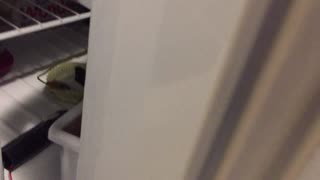Self Charging Capacitor
A self-charging capacitor system is a device that can charge itself without the need for an "external" power source. This technology has great potential for creating low-cost and sustainable energy solutions. In this video, we will discuss the basic concepts of how to build a self-charging capacitor system that takes advantage of a piezoelectric plate and hybrid solid-state membrane electrolyte/dielectric material, and a dissimilar metal to work as a capacitor and a galvanic air cell.
The first component of this system is the capacitor, which is made of a piezoelectric plate and a copper coil. The piezoelectric plate is a material that can convert mechanical pressure or electrical changes into an electrical charge, and the copper plate acts as a dissimilar metal conductor. By placing these two plates together, we can create a capacitor that can store electrical energy.
The second component is the galvanic air cell, which is essentially an air cell that generates an electrical current through a chemical reaction. As long as there is oxygen in the air, the galvanic air cell will be able to feed a low-level power into the system. This adds an additional source of energy to the system.
The third component is the piezoelectric pulse. This works by reacting to the electrical charge pulse generated by the capacitor 2 volt SCR dump to trigger a short that pulses and self-oscillates the capacitor. The rebound effect of the capacitor is "amplified" by the galvanic air cell and the piezoelectric plate, creating a self-charging cycle loop.
To initiate this cycle, we use an SCR (silicon-controlled rectifier) cab dump circuit. This circuit acts as a switch that allows a short pulse of electrical energy to be sent to the capacitor. When the capacitor is charged to a certain point, the SCR will "dump" the charge, initiating the self-oscillation cycle.
To take advantage of the self-charging effect, we can add an additional back EMF (electromotive force) collector as a hybrid in our capacitor and as back EMF dump collector. This allows us to use the back EMF and its increased amplitudes from another stage and take advantage of that to power our trigger devices. By not directly loading onto the capacitor self-oscillation, we can reduce stress on the system and potentially make it more efficient.
In conclusion, a self-charging capacitor system can be built using a combination of a piezoelectric plate, a hybrid solid-state membrane electrolyte/dielectric material, a dissimilar metal, and galvanic air cell properties. By using an SCR cab dump circuit and an additional back EMF coil, we can initiate and amplify the self-charging effect, potentially creating a sustainable and low-cost energy solution.
Please Help Support My Research: https://youtu.be/pYXETBB40j0
-
 4:38
4:38
Joel Lagace
1 month ago $0.07 earnedCell Conditioning
1392 -
 1:30:11
1:30:11
Pepkilla
4 hours agopool streammmmmm
15.3K6 -
 20:43
20:43
Front & Center with Jacquie Jordan
1 day agoChina & Russia dropped the USA Dollar: Is Decentralized Digital Currency the Answer?
17.7K6 -
 58:14
58:14
The Why Files
1 day agoGöbekli Tepe and the Prophecy of Pillar 43 | Apocalypse and the Vulture Stone
56K116 -
 3:50:29
3:50:29
LumpyPotatoX2
9 hours agoFortnite at Rumble Creator House - #RumbleTakeover
27.4K9 -
 1:01:16
1:01:16
Trumpet Daily
1 day ago $3.22 earnedThe Trump Tide Is Rising Again - Trumpet Daily | May 24, 2024
14.4K8 -
 23:44
23:44
ErmzPlays
1 day agoFallout: Just Turn Your Brain Off
35.1K56 -
 24:23
24:23
Brewzle
1 day agoWe Found Awesome Craft Bottles Bourbon Hunting In Louisiana
46.1K26 -
 8:45
8:45
ThinkStory
1 day agoATLAS Ending Explained!
48.8K20 -
 43:06
43:06
Chrissy Clark
23 hours ago $0.16 earnedKing Patrick And The Clark Cousins w/ Alex Clark
53.2K9